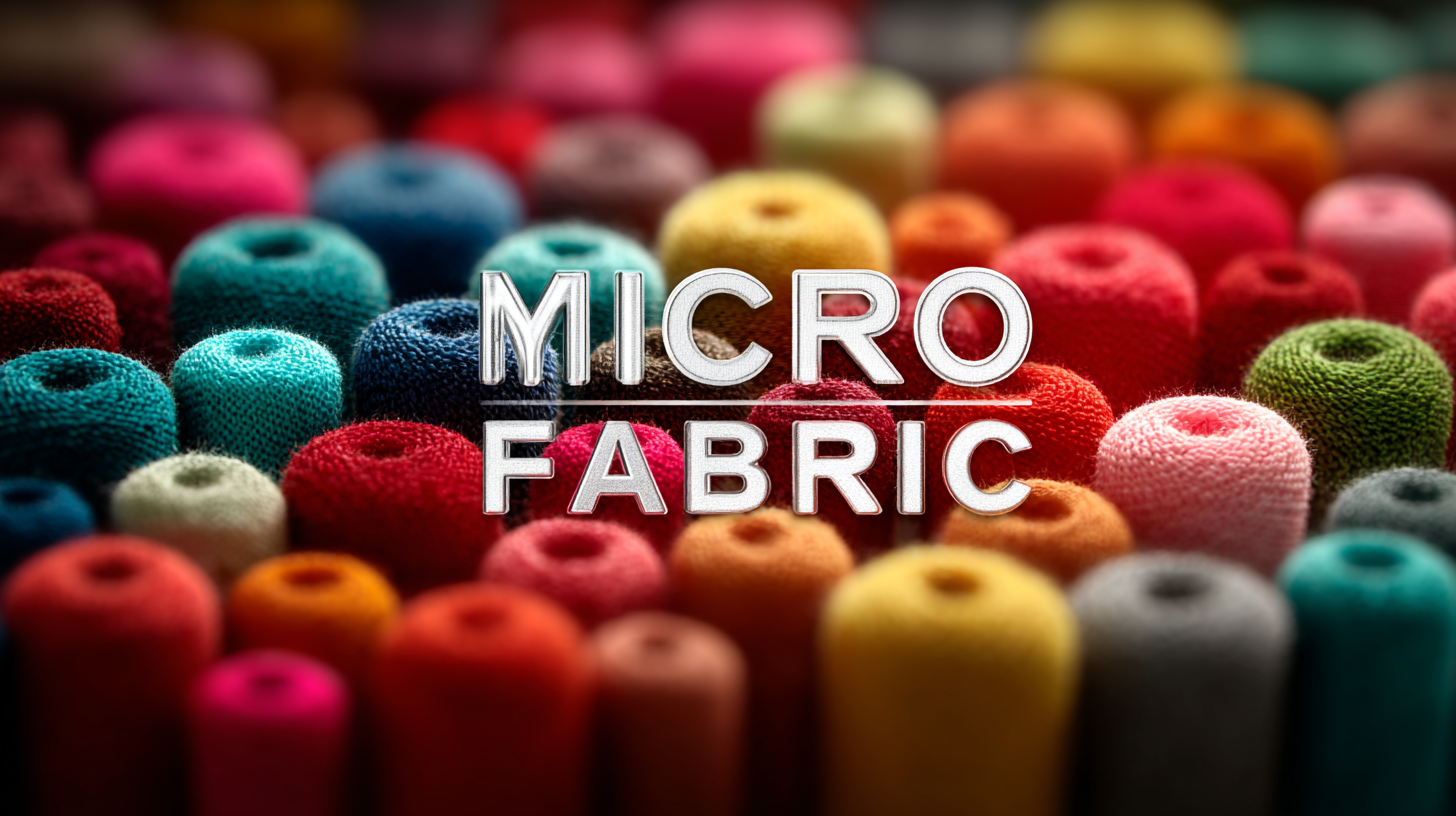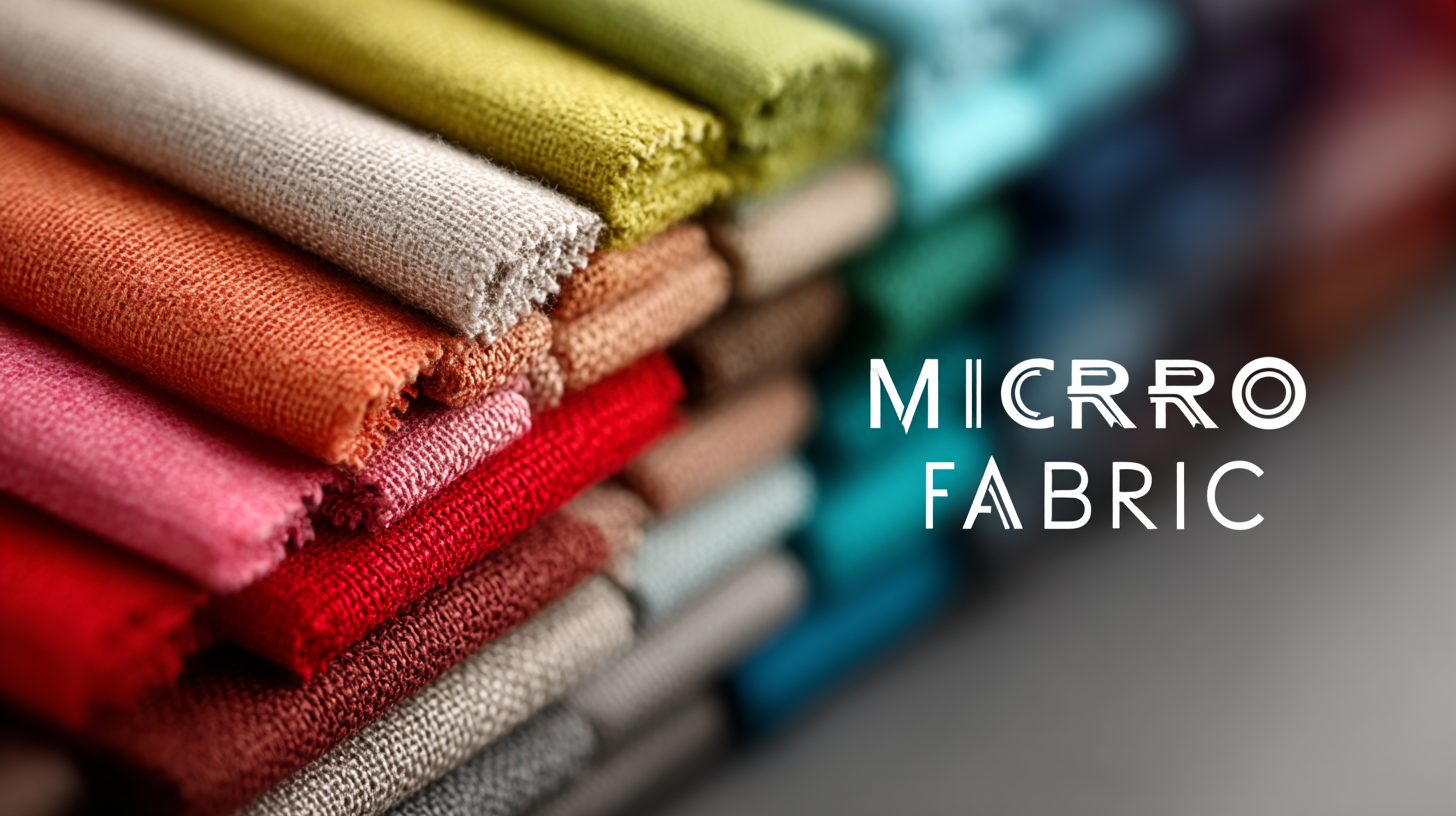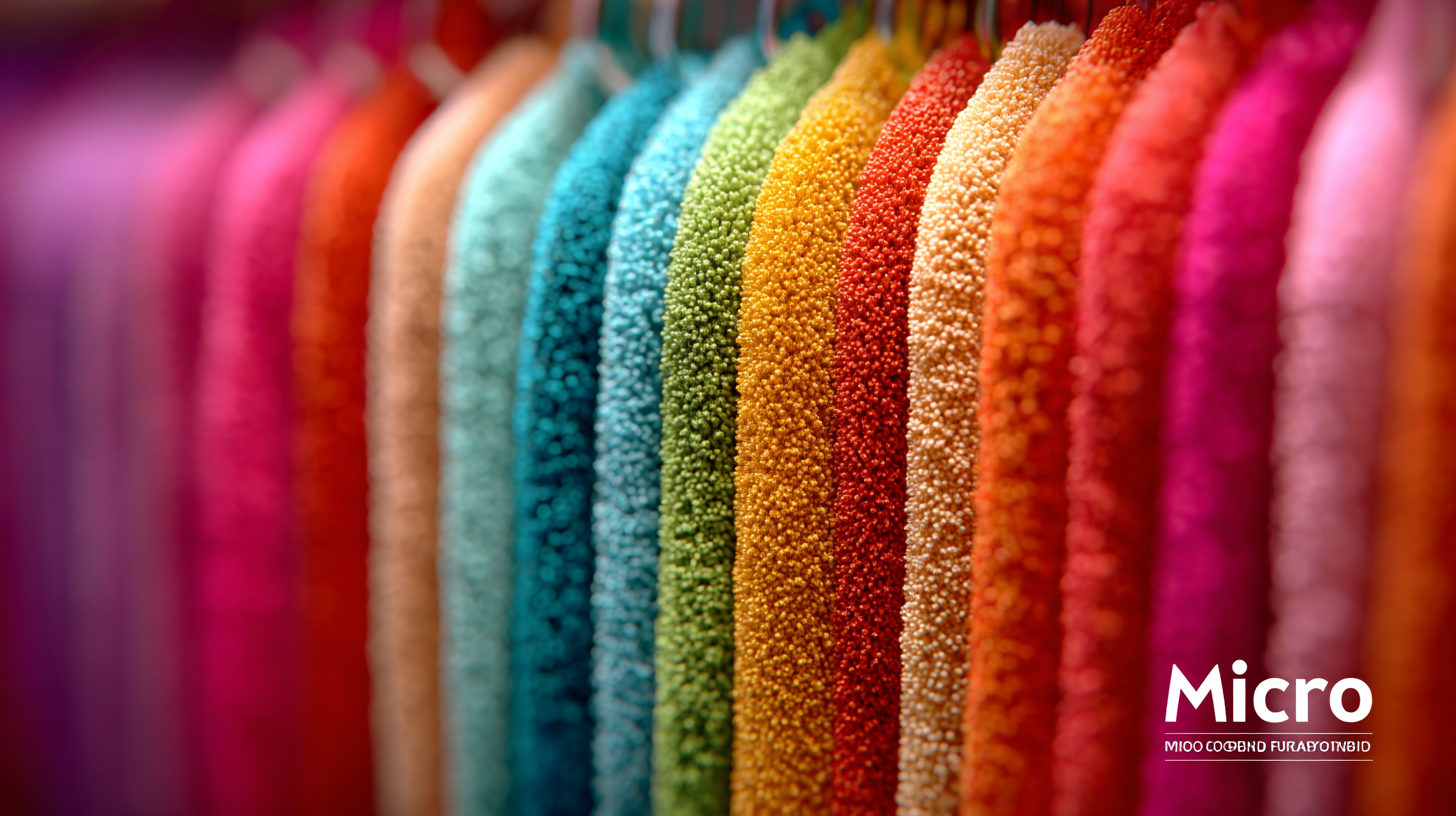In the rapidly evolving textile industry, the selection of materials plays a pivotal role in the success of global sourcing projects. As we look towards 2025, the demand for innovative fabrics such as Micro Fabric is surging, driven by advancements in technology and changing consumer preferences. According to a recent report by MarketsandMarkets, the global technical textile market is projected to reach $213 billion by 2024, highlighting the growing importance of specialized fabrics across various sectors. Micro Fabric stands out due to its lightweight, moisture-wicking properties, and versatility, making it ideal for applications ranging from activewear to home textiles. Understanding the benefits and characteristics of Micro Fabric is crucial for sourcing professionals aiming to enhance their product offerings while staying ahead of industry trends.

Micro fabric has gained popularity across various industries due to its lightweight, durable, and versatile nature. This advanced textile is commonly used in apparel, outdoor gear, and technical applications. For the fashion industry, micro fabrics such as micro fleece and microfiber blends provide a soft feel while ensuring breathability and moisture-wicking capabilities. Similarly, in the outdoor sector, micro fabrics are critical for creating jackets and pants that offer both weather resistance and comfort in the field.
When sourcing micro fabric, consider the specific needs of your project. For instance, if you are targeting the athletic wear market, prioritize moisture management and stretchability. Look for fabrics that are designed to wick sweat away from the skin while allowing for a full range of motion. Another tip is to assess the sustainability of your chosen material. Eco-friendly micro fabrics made from recycled materials not only appeal to environmentally conscious consumers but also add value to your brand.
Always sample different micro fabric types before making a final decision. Testing their performance characteristics—such as durability, ease of care, and aesthetic appeal—can prevent potential issues later in production. Engaging with suppliers who offer transparent sourcing practices and examples of previous successful projects can also significantly enhance your global sourcing experience.
The global micro fabric market has witnessed significant growth, driven by the increasing demand for high-performance textiles across various industries. According to a report by Grand View Research, the global microfabric market is projected to reach $8.3 billion by 2025, with a compound annual growth rate (CAGR) of 5.4% from 2019 to 2025. This surge can be attributed to the rising popularity of micro fabrics in applications such as activewear, home textiles, and automotive interiors, where lightweight, durable, and moisture-wicking characteristics are crucial.
Moreover, the expansion of e-commerce and retail channels has also contributed to the growth of micro fabrics in global sourcing projects. The Textile Exchange's 2020 Preferred Fiber & Materials Market Report revealed that 35% of global textile production is now focusing on sustainable materials, including recycled micro fabrics. This shift highlights a growing consumer preference for eco-friendly options, prompting manufacturers to adapt their sourcing strategies to include high-quality micro fabrics that meet both performance and sustainability standards, thus enhancing the overall value proposition for end-users.

Micro fabric is becoming an increasingly popular choice for brands looking to elevate their performance and sustainability in global sourcing projects. The first compelling reason to select micro fabric is its exceptional durability. This material withstands wear and tear better than many alternatives, ensuring that products maintain their quality over time. Whether for activewear or outdoor gear, micro fabric can handle high-intensity use while retaining its original shape and feel.
Another significant advantage is micro fabric's lightweight nature, which contributes to better comfort and ease of movement. This feature is particularly important for athletic apparel, where freedom of motion is crucial. Additionally, many micro fabrics are made from recycled materials, enhancing their eco-friendliness and supporting brands' sustainability goals. By choosing micro fabric, companies not only provide superior products but also align their sourcing practices with growing consumer demand for environmentally responsible materials.

When considering fabrics for global sourcing projects, a comparative analysis of micro fabric versus traditional fabrics reveals significant differences in cost and durability. According to a 2022 report by the Textile Institute, micro fabric can be up to 30% more cost-effective than traditional cotton and polyester blends over the product’s lifecycle. This is primarily due to micro fabric’s lightweight nature, which reduces shipping costs and makes it easier to handle during production.
In terms of durability, a study published in the Journal of Applied Textile Research found that micro fabrics exhibited a significantly higher resistance to wear and tear, lasting up to 50% longer than standard fabrics under similar conditions. This enhanced durability translates into lower replacement costs and fewer resources spent on manufacturing new products, which is particularly valuable in fast-paced markets where quick turnover is essential.
Ultimately, when assessing the long-term impact on both budget and environmental sustainability, micro fabric emerges as a compelling choice for companies looking to innovate in their sourcing strategies.
Micro fabrics have emerged as a versatile solution in various industries, offering durability and unique characteristics that cater to specific needs. In the fashion sector, a leading sportswear brand successfully integrated micro fabrics into their activewear line, resulting in a significant increase in sales. By leveraging the lightweight yet breathable quality of these materials, the brand provided athletes with enhanced comfort during high-performance activities, which resonated well with consumers who prioritize both functionality and style.
In the home textiles sector, a renowned bedding manufacturer adopted micro fabric for their luxury sheets. The softness and moisture-wicking properties of the fabric appealed to customers looking for a superior sleeping experience. The implementation of micro fabrics not only elevated the product's perceived value but also led to positive reviews and increased customer loyalty.
These case studies illustrate how the careful selection and application of micro fabrics can drive success across different sectors, emphasizing the importance of sourcing the right materials for innovative product development.
